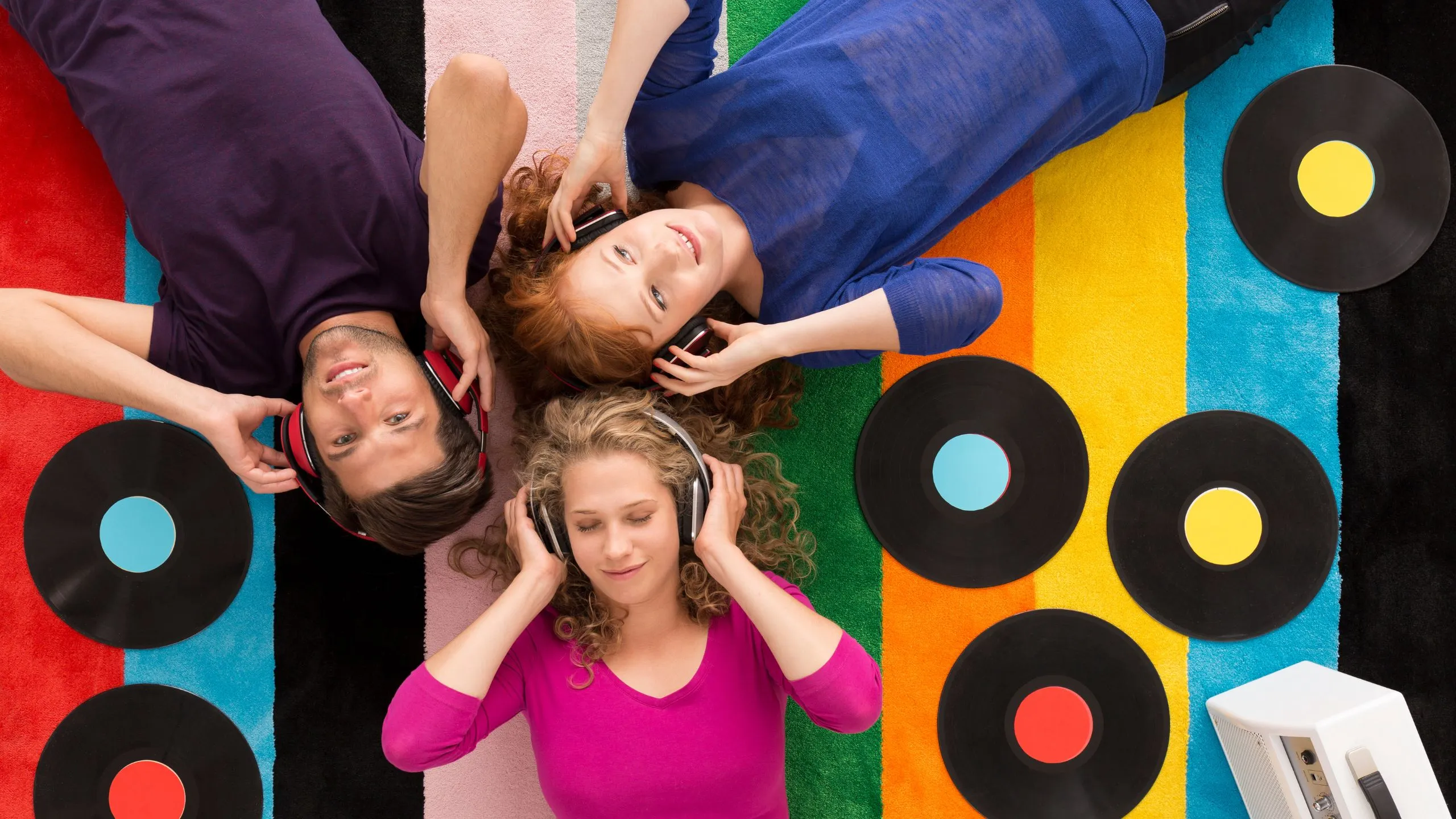“Music expresses that which cannot be said and on which it is impossible to be silent.” – Victor Hugo
Introduction
What if a simple melody could lift the weight of depression—if even for a moment? More than 21 million adults in the United States have experienced at least one major depressive episode, according to the National Institute of Mental Health. While traditional treatments such as psychotherapy and medication remain the cornerstone, there’s growing evidence that music therapy for depression is emerging as a powerful complementary approach.
Music has always been a universal language. But beyond entertainment, it can serve as a therapeutic tool that touches the very core of our emotional well-being. In this article, we’ll unleash the benefits of music therapy, backed by science, psychology, and lived experiences. You’ll discover how sound therapy works, and how music helps with depression in five distinctive and highly effective ways.
Let’s dive into how music therapy for depression can bring hope, healing, and harmony into mental health care.
Related: 10 Early Warning Signs of Depression That Are Hard to Miss
🎶 What Is Music Therapy?
Music therapy is a clinical and evidence-based practice where music is used to achieve individual therapeutic goals. Guided by a certified music therapist, the process may involve listening to music, singing, playing instruments, or composing songs.
Active vs. Receptive Music Therapy
- Active: Engaging directly—singing, composing, or playing instruments.
- Receptive: Listening to carefully selected tracks designed to elicit emotional or cognitive responses.
The approach is tailored based on the client’s needs and preferences, making it flexible, personal, and incredibly impactful for those living with depression.
“Music therapy gives us access to feelings we didn’t even know we were holding.”
Related: Guided vs Unguided Meditation: Which Strategy Is Right for You?
Understanding Depression from a Clinical Lens
To appreciate the impact of music therapy for depression, we first need to understand what depression does to the brain.
Depression is more than persistent sadness. It affects:
- Cognitive functions like memory and concentration
- Sleep and appetite patterns
- Motivation and emotional regulation
Neurochemically, it’s linked to imbalances in serotonin, dopamine, and norepinephrine. These neurotransmitters regulate our mood, and when disrupted, they contribute to feelings of hopelessness, fatigue, and disinterest.
Related: Mindful Eating: 5 Easy Yet Healthy Tips to Eat with Awareness
The Science Behind Music Therapy & Depression
Studies show that music can:
- Trigger dopamine release, enhancing pleasure and motivation
- Regulate cortisol levels, reducing stress
- Synchronize brain wave activity, promoting relaxation
According to a 2020 systematic review published in Frontiers in Psychology, patients who participated in music therapy sessions reported lower depression scores compared to control groups.

Related: Identifying High-Functioning Anxiety – 5 Alarming Threats
Neurobiological Mechanisms
Music influences:
- The limbic system, responsible for emotions
- The prefrontal cortex, related to decision-making and self-regulation
- The hippocampus, which plays a role in memory and mood stability
Music therapy for depression engages these brain regions, creating emotional shifts and increased neural plasticity.
Related: How to Build Confidence? 5 Key Secrets to Eliminate Insecurities
🎧5 Unique Ways Music Therapy Heals the Mind
1. Reduces Anxiety and Stress
Listening to calming music can reduce the heart rate, lower blood pressure, and decrease cortisol levels. Ambient music or nature sounds are commonly used in sound therapy to induce relaxation.
Key takeaway: Music can offer instant calm, similar to meditation or breathing exercises.
Related: Why Nature is Essential for Mental Peace: 10 Science-Backed Benefits
2. Encourages Emotional Expression
Sometimes, words fail us. Through songwriting or improvisational drumming, clients externalize emotions safely.
Example: Veterans in group music therapy often express trauma through lyrics they might never voice in therapy.
Related: Yoga for Brain: Boost Memory & Focus Naturally in 30 Minutes Daily
3. Enhances Motivation and Mood
Upbeat or rhythmic music boosts energy and activates the reward system in the brain. This can be crucial for individuals experiencing lethargy and lack of motivation.
“When I feel too low to speak, I just play my favorite track. It gets me moving again.”
Related: Pessimism vs Optimism – 5 Interesting Hidden Facts You Can’t Ignore
4. Improves Sleep and Cognitive Function
Music before bedtime can enhance sleep quality. A study by the Sleep Foundation found that slow-tempo music (around 60 bpm) helps regulate the sleep cycle.
Bonus: Improved sleep leads to better emotional regulation and mental clarity.

Related: 6 Brilliant Sleep Meditation Tips for a Restful Mind
5. Builds Social Connection and Support
Group drumming, choirs, or dance sessions build interpersonal connection. Isolation is a common symptom of depression, and musical collaboration offers a sense of belonging.
Key takeaway: Music not only heals internally but strengthens external connections.
Related: Overcoming Social Anxiety – 5 Little-Known Mistakes That Make Worse
Techniques Used in Music Therapy
| Technique | Description |
|---|---|
| Guided Listening | Curated playlists based on mood or symptoms |
| Songwriting | Writing lyrics to express emotions |
| Instrument Playing | Percussion, keyboard, or guitar to release tension |
| Vocal Toning | Using voice vibrations to soothe the nervous system |
| Movement to Music | Dance or rhythmic motion to activate body-mind connection |
| Sound Bath | Immersion in vibrations from singing bowls, gongs, etc. |
Related: Unlock the Power of Law of Attraction 432 Hz: Manifest Your Desires with Frequency
Where to Find a Certified Music Therapist
- Search the American Music Therapy Association
- Ask for referrals from mental health professionals
- Look into local wellness centers or online therapy platforms offering music therapy for depression
DIY: Try Music Therapy at Home
Here’s how we can experience the benefits of music therapy ourselves:
- Create a mood-based playlist (happy, reflective, calm)
- Journal while listening to instrumental or lo-fi beats
- Use apps like Insight Timer, Calm, or Brain.fm
- Sing freely in the shower or car—it’s expressive!
No musical skill is required—just willingness to feel.

Related: The Science of Happiness: What Exactly Boosts Your Mood in 2 Minutes?
Conclusion
Music therapy for depression is more than an alternative approach—it’s a bridge between emotion and healing, sound and soul. While it’s not a standalone treatment, it offers a deeply personal and scientifically validated pathway toward wellness. Whether we’re strumming a guitar or simply soaking in a favorite song, we’re tapping into our innate power to heal through harmony.
Let’s not overlook the music within. Because sometimes, the best way out of the dark is through the sound.
FAQs
1. How long does it take for music therapy to work?
Results vary, but many report mood improvement within a few sessions.
2. Can I do music therapy without a therapist?
Yes. DIY methods can be helpful, but certified guidance deepens the impact.
3. What type of music is best for depression?
Soft classical, lo-fi, ambient, or nature sounds work best. Personal taste matters too.
4. Is music therapy evidence-based?
Yes, supported by research in neuroscience, psychology, and psychiatry.
5. Is music therapy safe for everyone?
Generally yes, but should be used alongside professional advice for severe depression.






